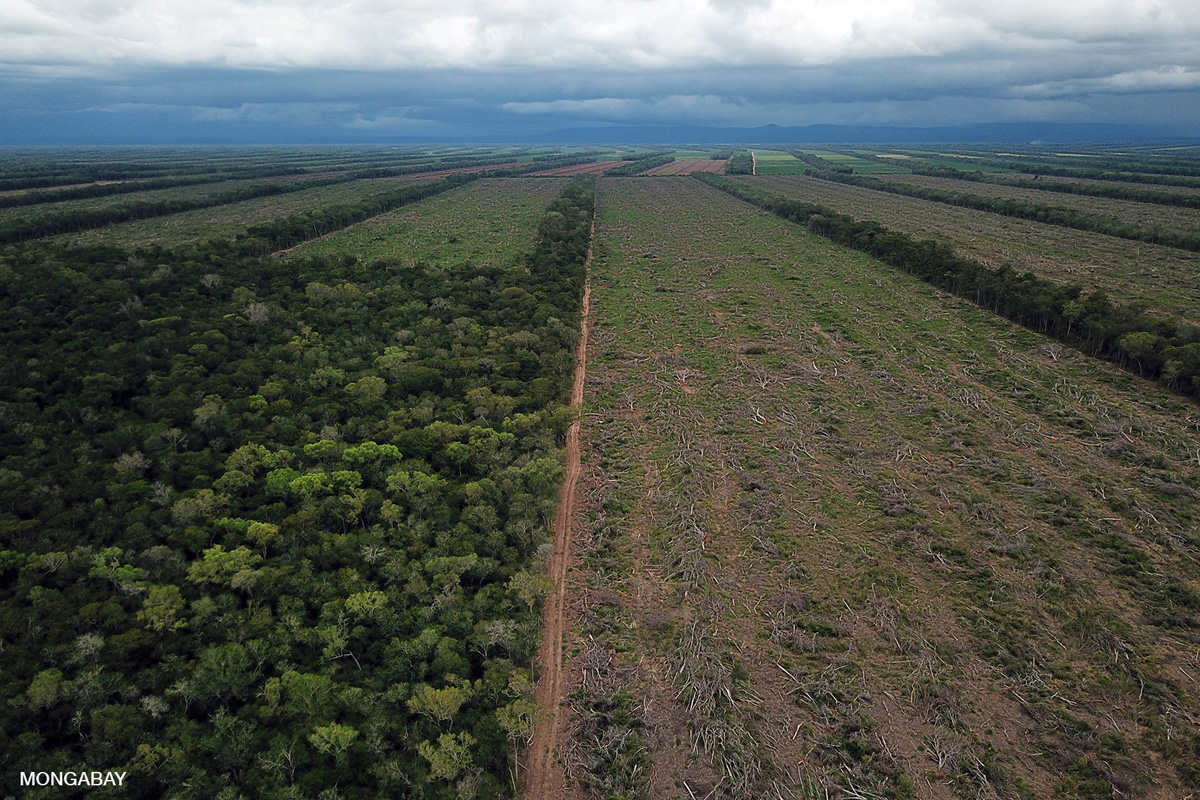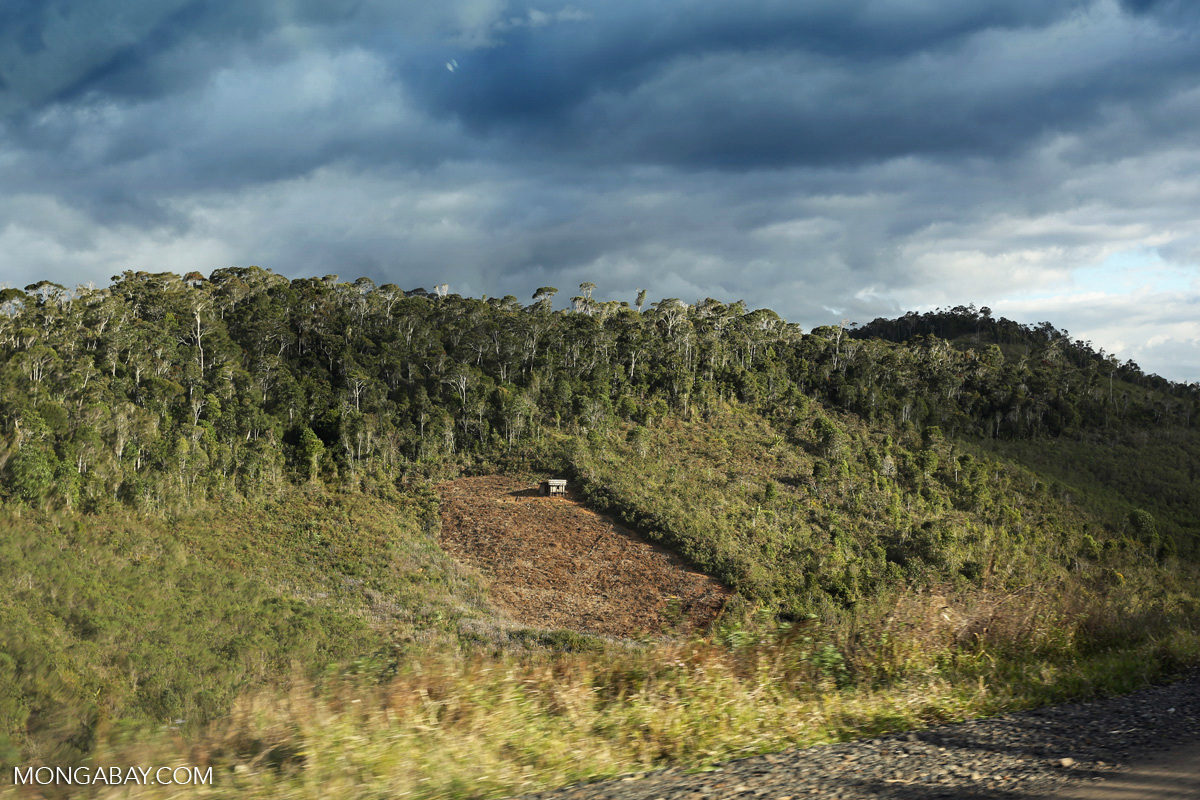- Globally, there was a net loss of 817,000 square kilometers (315,000 square miles) in forest area between 1960 and 2019, according to a new study. That’s nearly 10% more than the size of Borneo, the world’s third-largest island.
- The study showed that most forest loss occurred in “lower-income” countries as their economies grew, which are found primarily in the tropics. Forests in wealthier countries tended to expand.
- The authors say their findings confirm the forest transition theory, which links countries’ economic development to changes in land use.
- International organizations like the U.N. and rich countries should provide support to less-industrialized, forested countries to allow them to find economically beneficial alternatives to deforestation, the study authors say.
Since 1960, the world has lost an area of forest larger than the island of Borneo, according to a recent study.
That net loss of 817,000 square kilometers (315,000 square miles) of forest area, combined with the growth of the global population, means that there’s just half a hectare (1.2 acres) of forest for every person on the planet, down from 1.4 hectares (3.5 acres) in 1960.
Forest per capita “is an interesting metric, since we and all life on Earth rely on forest ecosystems, directly or indirectly,“ the authors, led by geoenvironmental scientist Ronald Estoque of Japan’s Forestry and Forest Products Research Institute, told Mongabay in an email.
To understand when and where Earth’s forests have changed over time, Estoque and his colleagues employed a recently published data set that plotted out land-use change between 1960 and 2019 using satellite data, reconstructions and statistical modeling. They analyzed forest gain and loss country by country across the globe over that time period. They also looked at each country’s gross domestic product, a measure of the goods and services that a country produces. The team reported their research Aug. 1 in the journal Environmental Research Letters.

The authors say their analysis confirms forest transition theory. According to this idea, first introduced in the 1990s by geographer Alexander Mather, the bulk of forest loss occurs in “lower-income” countries as their economies grow, often as a result of harvesting marketable forest products like timber or clearing land for agriculture. Forests in “higher-income” countries tend to expand, as they did in general over the six-decade study period, suggesting a switch to other ways of generating revenue.
The authors say revealing these trends and at what point on the “transition” timeline each country lies could be useful.
“[I]f new policies that can accelerate forest transitions could be identified, then the corresponding forest gains and carbon sequestration might help address climate change issues, avert biodiversity losses, and prevent a further deterioration in ecosystem services,” the team said in their email.
They suggest that industrialized countries should look for alternatives to goods linked to tropical deforestation to help lower demand. Bolstering certification policies for timber and other forest products could help reduce deforestation as well. And wealthy countries should increase the financial assistance they provide forested countries with the aim of keeping their forests standing, perhaps with an eye toward exploring new economic pathways and implementing conservation policies, they write.

“It is important that the national government of each country recognizes the importance of sustaining forest ecosystems, not only for economic [reasons], but also for biodiversity conservation, climate change mitigation and adaptation, and ecosystem-based natural disaster risk reduction and management,” the authors said. “Unless this happens, it will be difficult to address the issue of forest loss worldwide without country-level government support.”
The good news is that fewer countries are losing forest today than in the 1980s or ’90s, the study showed. At the same time, however, the rate at which the world has been gaining forest cover has slowed down. That highlights the need for boosting forest restoration efforts, the authors said, particularly in the tropics where the balance of forest has skewed heavily toward the loss column.
“Using spatially explicit data to verify the forest transition theory (FTT) is, in my opinion, an exciting and encouraging approach,” Nguyen Tien Hoang, an associate professor in geoinformatics at Japan’s Research Institute for Humanity and Nature, told Mongabay in an email.
Nguyen, who was not involved in the new study, agreed with the authors that forest restoration in the places where it had been lost in the past six decades is important. But he said the reality of such endeavors is complicated. He also said that cutting back on the import of products from tropical countries “may not be realistic.”
“First, many goods can only be produced in the tropics,” Nguyen said. And losing the potential to export those goods could be particularly detrimental to local communities dependent on the production of those goods. Forest protection policies should aim to strike a balance between conservation and community livelihoods, he added.

“Conversion of forest land to cropland and livestock pasture leads to permanent forest loss while we do not have enough land resources for forest restoration,” Nguyen said.
The authors of the study propose that organizations like the United Nations and wealthy countries support programs focused on community forest management, agroforestry and participation in the green economy as a way to ease the transition from forest-dependent economies for the most affected communities.
Johan Oldekop, an associate professor in environment and development at the University of Manchester in the U.K. who also was not involved in this research, called it “a good descriptive study.” Oldekop said any plan for restoration must take into account the people who live in the surrounding areas. In a 2020 study, he and his colleagues found that more than 294 million people live on land where tropical reforestation could take place, setting up the potential for conflict.
“The restoration pledges and initiatives have to make sure to include people and people’s livelihoods and tenure decisions and agency into these decisions,” Oldekop said. If they do, it’s likely to improve the outcomes for forests and for people, he added. “There’s quite a lot of evidence that shows that if you devolve decision making and property rights to local communities, you will tend to have lower deforestation rates, [more] restoration, and improvements in people’s livelihoods.”
Banner image: Illegal sand and gold mining in West Kalimantan, Indonesia. Image by Rhett A. Butler/Mongabay.
John Cannon is a staff features writer with Mongabay. Find him on Twitter: @johnccannon
Citations:
Erbaugh, J. T., Pradhan, N., Adams, J., Oldekop, J. A., Agrawal, A., Brockington, D., … Chhatre, A. (2020). Global forest restoration and the importance of prioritizing local communities. Nature Ecology & Evolution, 4(11), 1472-1476. doi:10.1038/s41559-020-01282-2
Estoque, R. C., Dasgupta, R., Winkler, K., Avitabile, V., Johnson, B. A., Myint, S. W., … Lasco, R. D. (2022). Spatiotemporal pattern of global forest change over the past 60 years and the forest transition theory. Environmental Research Letters, 17(8), 084022. doi:10.1088/1748-9326/ac7df5
Mather, A. S. (1992). The forest transition. Area, 24, 367-76. Retrieved from https://www.jstor.org/stable/20003181
Winkler, K., Fuchs, R., Rounsevell, M., & Herold, M. (2021). Global land use changes are four times greater than previously estimated. Nature Communications, 12(1). doi:10.1038/s41467-021-22702-2
FEEDBACK: Use this form to send a message to the author of this post. If you want to post a public comment, you can do that at the bottom of the page.
